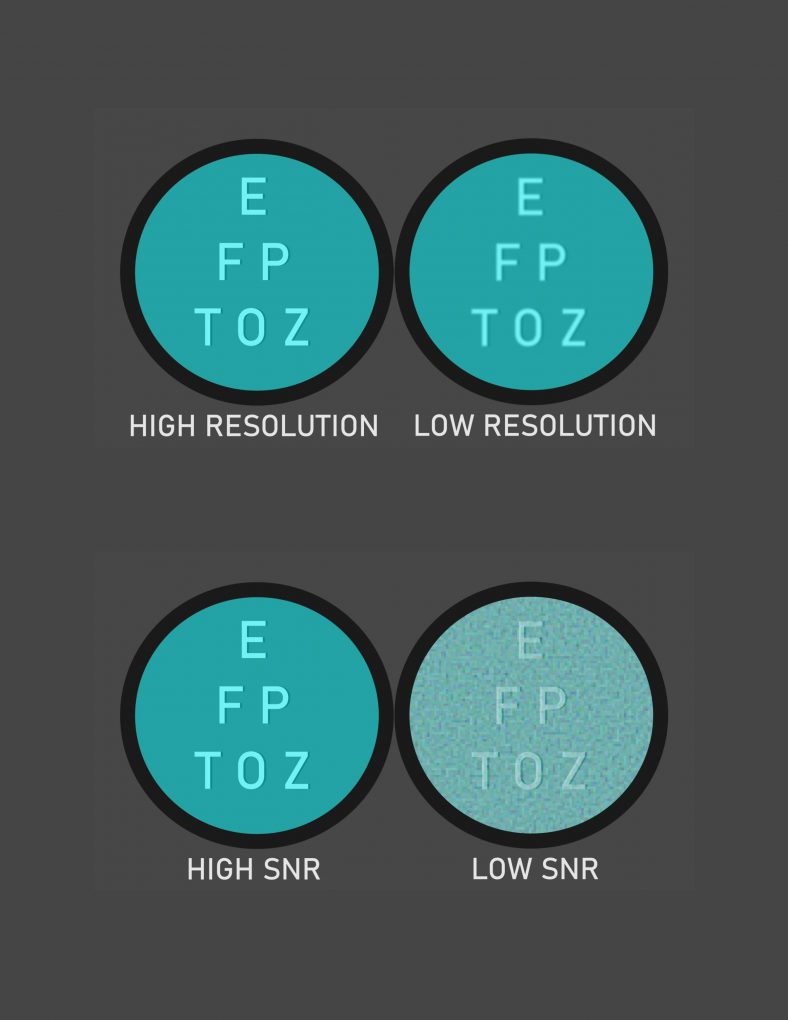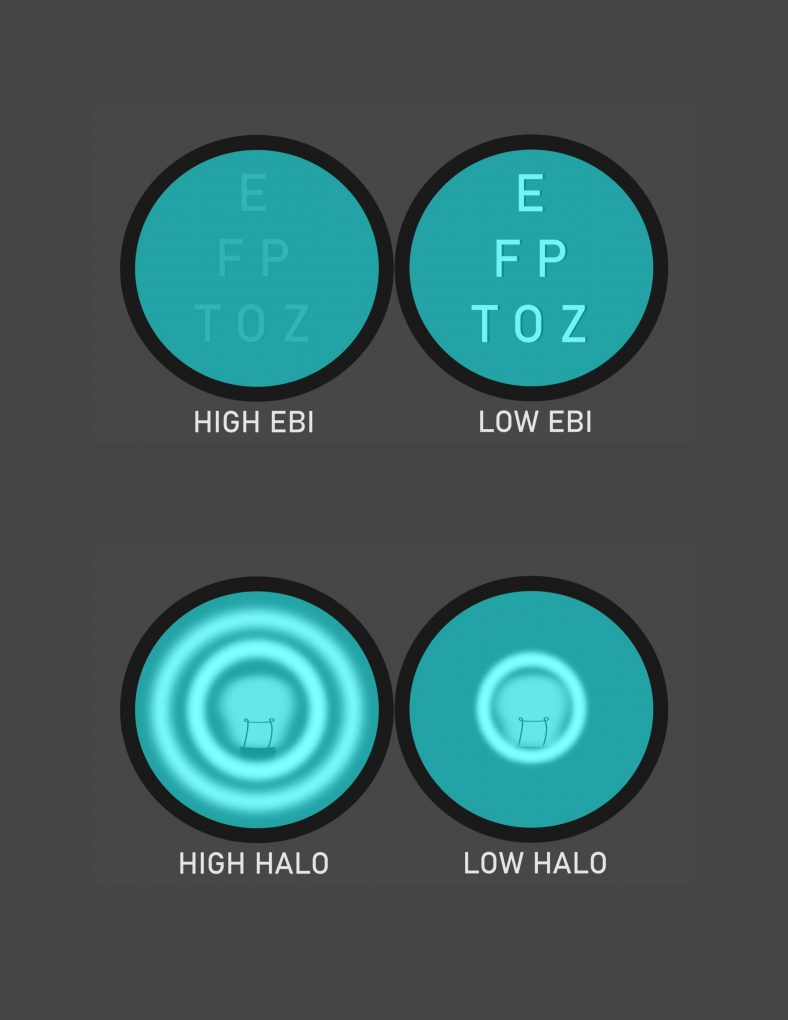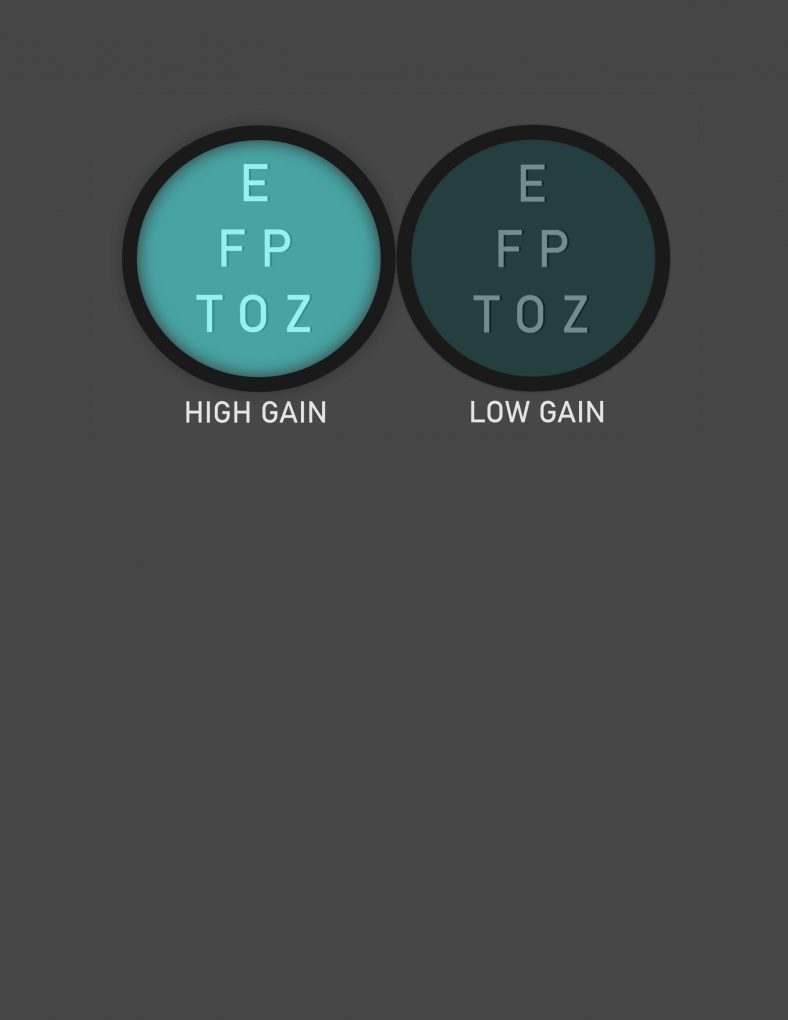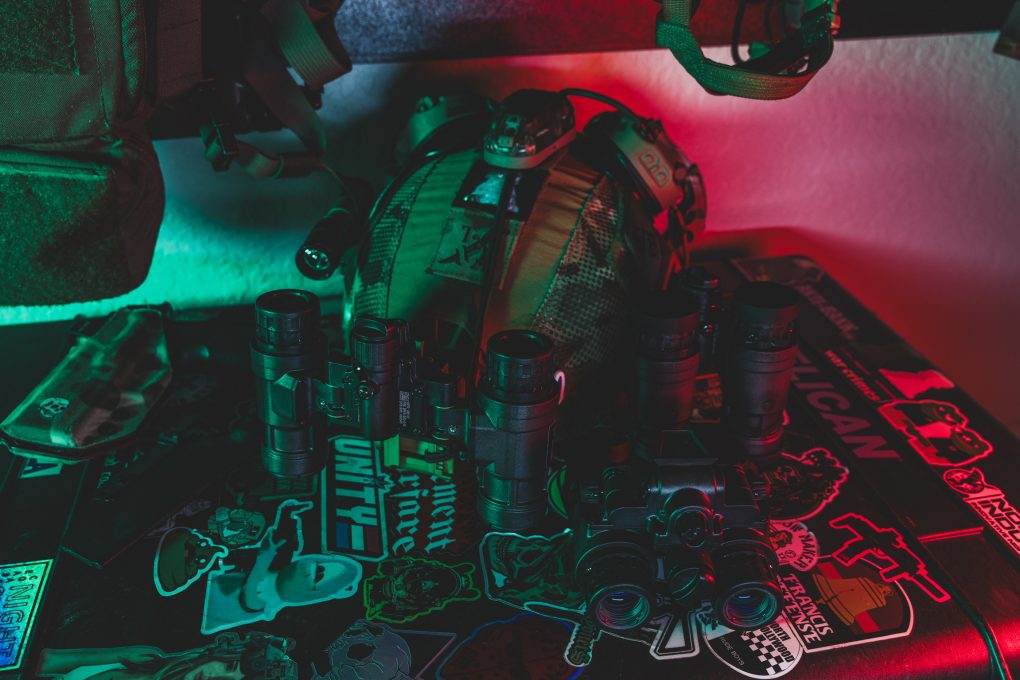Specs
When purchasing a night vision device, it is essential to understand a few key specs and what an
acceptable value for each is. However, we want to warn against falling into a rabbit hole. It is
easy to become obsessed with these specs and search tirelessly for that perfect tube that doesn’t
exist. Instead, form a list of specs you find the most important for your application and a
reasonable target value for each. This will ensure you get a tube that meets your requirements but
also that you don’t suffer from “paralysis by analysis.” Below are definitions of the specs we list
for each tube, which we hope will be helpful during your buying experience.
Center resolution (we list this as “LP”) is like the resolution on a screen; the higher, the better, at
least theoretically. Center resolution is measured in line pairs per millimeter (LP/mm). At a
point, any higher resolution is indistinguishable to the naked eye at 1x magnification (the
magnification of most head-borne systems). This point is believed to be 64 lp/mm (the mil-spec
minimum). This changes when using clip-on devices such as the CNVD-LR, where a magnified
optic allows users to take advantage of higher resolutions. It should be noted that a tube listed as
64 LP/mm could very well be up to 71 LP/mm; it just didn’t break the 72 LP/mm threshold to be
labeled as such. This is also true for higher values (i.e., 76 LP/mm could be up to 80 LP/mm).
SNR, or Signal to Noise Ratio, is the best indicator of low-light performance. In low-light
conditions, a “TV static effect” appears in the tube. This is known as scintillation or noise. This
noise takes away from what you’re trying to see. The higher the SNR value, the less noise is
present, and therefore, better low-light performance is obtained.
EBI stands for Equivalent Background Illumination. A night vision tube works by taking in
photons, which strike the photocathode, which then releases electrons. These electrons are then
multiplied by the microchannel plate. Once multiplied, they strike the phosphor screen, which
releases photons that produce the image your eye perceives. However, electrons are not just
released by the photocathode when struck by photons. They are released even when no light
(photons) enters the device. The number of electrons released depends on the tube and ambient
temperature. The “spare” electrons lead to a certain level of perceived light as they are multiplied
and converted to photons at the phosphor screen. Instead of an image, it’s like a mist that the eye
perceives. If your environment has a lower light level than this perceived level of light, it will not
be able to overcome this background level of illumination. Instead, it will be masked by the EBI.
Any light level greater than the EBI will produce a usable image. Therefore, EBI is essentially
the lowest light level in which a tube is useful. Anything under the mil-spec maximum of 2.5
will be fine. Note that to convert Photonis values to the same unit of measure used by L3Harris/Elbit, you must multiply the EBI by 10.
Halo is the ring of light or “bloom” you see around light sources (looks like a halo), so you want
it under 1 (which is the mil-spec maximum).
FOM (Figure of Merit) is SNR X center resolution. I don’t look at FOM since it can be inflated
by a high center resolution that doesn’t necessarily give you any tangible benefit (as described
earlier). I’ll take a lower FOM if it means I’m getting a tube with a higher SNR vs a given higher FOM tube.
L3Harris vs Elbit vs Photonis
At Steele, we believe no one brand of tube is inherently better than another. Instead, we
understand each tube type has its own pros and cons. Deciding what’s best for you comes down
to a few key factors: the use case for the unit, the amount of money you can justify spending, and
the performance you expect from the device.
L3Harris unfilmed image tubes are the gold standard for most users. Because of their unfilmed
construction, they generally have higher specs, specifically SNR, which leads to better low-light
performance in most cases. For buyers who want the ultimate low-light performance and aren’t
overly concerned with cost, the L3Harris unfilmed tubes are a top pick.
Elbit thin-filmed tubes are an outstanding balance of cost and performance. Popular with buyers
looking to save hundreds to even a couple thousand dollars in some cases over L3Harris
unfilmed tubes, the Elbit generally have slightly lower average specs than their L3Harris
counterparts but still bring respectable numbers to the table. They hang with the L3Harris
unfilmed image tubes in almost all conditions, only being outdone in extreme low light in most
cases. You can find a nice Elbit tube that beats a given L3Harris unfilmed tube, but we are trying
to speak to what buyers will generally see.
Lastly, your tube search should consider the Photonis image tubes. With their superb high light
resolution, quick auto gating, and low halo, Photonis tubes are some of the best for all-around
performance. The high light resolution is usually much higher than that of Elbit or L3Harris
tubes, making them the go-to for users operating in primarily urban or semi-urban environments.
Boasting similar SNR values to Elbit in most cases, Photonis tubes also hold their own in
low-light conditions. In the past, lower gain (brightness) levels did hold these tubes back some in
the realm of low light performance, but with the “high gain” Photonis tubes that are becoming
more readily available, these tubes are now even more serious contenders.
We hope this article has been helpful in your search for night vision. If you have any other
questions or need clarification on the information listed here, please feel free to call, email, or
utilize our live chat feature!




